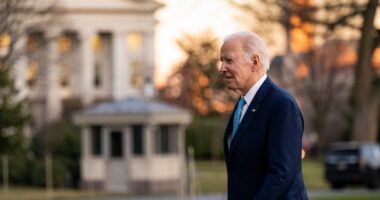
Wall Street sees airlines as less than the sum of their parts: Carriers’ valuations are below those of their own frequent-flier programs, data disclosed during the pandemic suggest. But this isn’t necessarily a clear buy signal for investors.
Issuing miles to frequent fliers, who then exchange them for flights and perks, is a great business. Research shows that customers end up paying more than they would without the loyalty scheme—a 2011 paper found a premium of between 5% and 6%—and the airlines often get to fill seats that would otherwise have gone unoccupied. Until the Covid-19 crisis, investors understood this only in general terms. Now they have some striking numbers to back up the point.
American disclosed that, in 2019, its AAdvantage program generated $5.9 billion in cash inflows, with a 53% margin. This is more than Delta’s SkyMiles and United’s MileagePlus, even though American is the least profitable of the three when it comes to actually selling tickets. The loyalty program accounted for roughly half of its entire earnings.
The other two legacy carriers aren’t quite so dependent on the points business, but the numbers they reported in bond documents last year were still at the optimistic end of forecasts. SkyMiles accounted for almost all of Delta’s much-touted improvement in profits since 2015.
The data vindicate estimates by Stifel analyst Joseph DeNardi, who has long championed the thesis that markets are undervaluing these programs. His valuations suggest AAdvantage, SkyMiles and MileagePlus have equity of $31 billion, $29 billion and $18 billion, respectively. That theoretically implies that the airline business is worth less than $2 billion for Delta, a negative $5 billion for United and a whopping minus $19 billion for American.
The profitability of modern-day loyalty schemes is underpinned by the co-branded credit cards issued by banks and bearing airline insignia. These grant miles every time they are used. Merchants pay huge interchange fees, which banks pass on to airlines. In effect, in addition to flying people around, airlines own valuable marketing operations that help attract customers to banks.
India’s JetPrivilege, which operates independently following the demise of its parent Jet Airways in 2019, is proof that loyalty programs can stand alone, as long as they have enough big partners to work with. This suggests airlines have a lot of value to unlock.
Most attempts to split programs out have failed, though. American can’t simply ditch the unprofitable part of its business and become a marketing company, because the two businesses are deeply intertwined.
Airline customers don’t always analyze the value of points in a fully rational way, but studies show they care about seat availability, the status conferred by particular perks and, of course, where they get to fly to. This requires legacy carriers to maintain big networks and high service standards. It isn’t accurate to assign all of the associated expenses to the airline business and none to the loyalty scheme. If networks become permanently smaller after the pandemic, it should impact loyalty revenues.
Ringfencing frequent-flier programs and reporting on them separately—a move Mr. DeNardi argues for—should still give an extra bump to airline stocks. Carriers’ marketing operations do possess some stand-alone value, which means investors should take their financial figures seriously.
They just shouldn’t take them literally.
Write to Jon Sindreu at [email protected]
Copyright ©2020 Dow Jones & Company, Inc. All Rights Reserved. 87990cbe856818d5eddac44c7b1cdeb8








